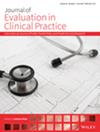Development and Validation of an Instrument to Assess Quality and Completeness of Medication-Related Discharge Documentation
Abstract
Rationale
Transitions of care are periods of heightened risk of medication management errors. Poor-quality discharge documentation has been linked to incorrect or suboptimal medication use and unplanned hospital visits. Despite regulations defining essential components of medication-related discharge documentation, deficiencies persist, highlighting the need for a method to assess whether current clinical practice meets these standards.
Aims
To conduct an initial validation of a newly developed instrument, the Complete Medication Documentation at Discharge – Measure (CMDD-M), assessing the quality and completeness of medication-related discharge documentation in a Swedish clinical setting.
Methods
The instrument was developed and refined in multiple stages. In this study, two clinical pharmacists and one geriatrician independently applied the final instrument to discharge documentation from 50 patients. Inter-rater reliability (IRR) was evaluated using linear and quadratic weighted Cohen's κ (κWlinear and κWquadratic).
Results
The average CMDD-M score, based on the consensus of the three raters, was 3.40 (SD ± 2.50) out of nine possible points across the patients' discharge documentation. The IRR between the pharmacists' individual assessments demonstrated almost perfect agreement, with κWlinear and κWquadratic values of 0.92 (95% CI: 0.80–1.00) and 0.97 (95% CI: 0.85–1.00), respectively. Moreover, the IRR between the pharmacists' consolidated score and the geriatrician's assessment displayed a moderate to strong agreement, with κWlinear and κWquadratic values of 0.64 (95% CI: 0.48–0.80) and 0.80 (95% CI: 0.64–0.97), respectively.
Conclusion
The CMDD-M demonstrated robust IRR confirming its ability to consistently and accurately measure the quality and completeness of medication-related discharge documentation in an easy-to-use form. Further research is recommended to ensure validity, generalisability and association with clinically relevant outcomes supporting the instrument's potential usefulness for evaluating and improving clinical practice and research.

 求助内容:
求助内容: 应助结果提醒方式:
应助结果提醒方式:


